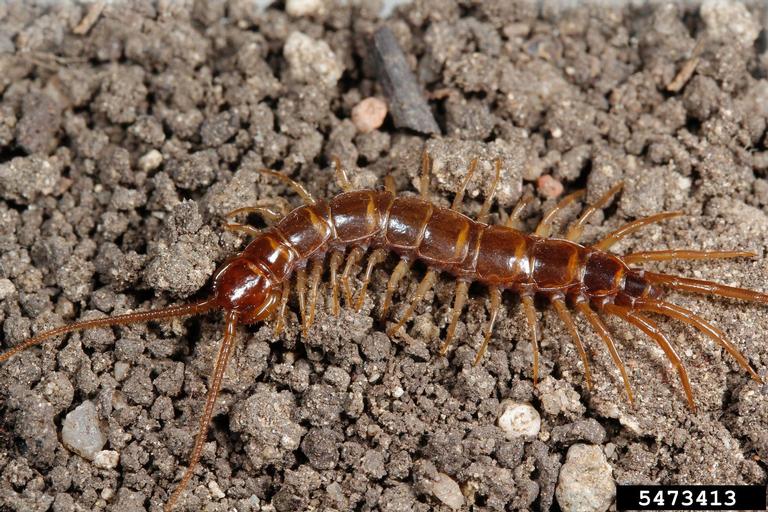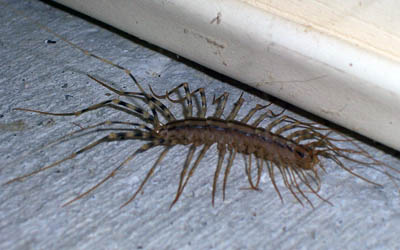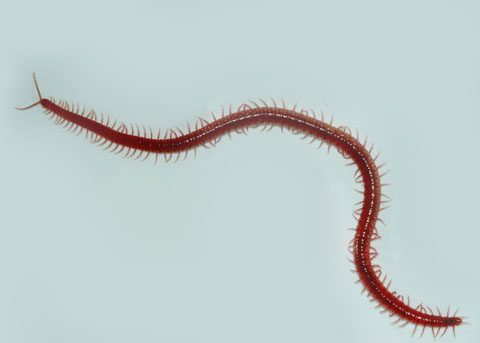Often confused with millipedes, centipedes are a benificial pest in that they eat common household pests like cockroaches and silverfish. Centipedes typically avoid humans, but will sometimes crawl into damp, cool areas of homes like basements and garages in large numbers. Get rid of these nuisance pests with our selection of centipede control products.
Centipede control isn’t difficult, but since centipedes can enter homes through very small openings, sealing cracks and filling spaces around pipes and vents can keep these pests out of your home. Keeping humidity in your basement or other dark space low discourages centipedes. Reduce the centipedes’ food source. Sticky traps set around your home can let you know what insects are inhabiting your home so you can take the steps to eliminate those pests as well. Discourage water near your foundation; make sure soil grades away from the foundation.
If you see centipedes out in the open, an aerosol pesticide safe for indoor use, like Eco PCO AR-X, can be used to kill centipedes individually. Luckily, there are not often large centipede infestations in a home. This is more common with millipedes.
Here are some common questions and answers about house centipedes to help you learn more about centipedes to determine the best control method for your home.
Q: What are centipedes?
A: Centipedes, or Scutigera coleoptrata, are arthropods that belong to the class Chilopoda.
Q: Are centipedes poisonous?
A: Centipedes are not poisonous to humans.
Q: How many legs do centipedes have?
A: The number of legs a centipede has depends on how many body segments the centipede has. They can have many, up to 100 legs.
Q: What do centipedes eat?
A: Centipedes feed on silverfish, carpet beetle larvae, cockroaches, spiders, and other smaller arthropods.
Q: Where do centipedes come from?
A: Centipedes originated in the Mediterranean and were introduced to North America by way of Mexico, where it quickly spread throughout the country.
Q: What does a centipede look like?
A: House centipedes are long and flattened arthropods with one pair of legs for each body segment. Most house centipedes have about 15 body segments. The last pair of legs on the adult female is twice as long as the 1 to 1.5 inch body. This makes house centipedes appear to be much larger, around 4 to 5 inches. They are bluish gray or grayish yellow in color with banded black and white legs. Centipedes that live outdoors have much shorter legs and do not move as quickly as house centipedes. (See images below of house and outdoor centipedes)
Q: Do house centipedes bite?
A: Centipedes have poison claws behind their heads that they use to poison and paralyze their prey (small insects). These claws are weak and rarely penetrate human skin. There have been cases reported of people being bitten by centipedes but a centipede bite is no worse than a bee sting, and they bite humans very infrequently.
Q: Are house centipedes dangerous?
A: House centipedes are not dangerous. If found in your home, they are simply a nuisance; they do not threaten the health of humans or pets in a home.
Q: Where do centipedes live?
A: Centipedes like dark, damp, cool hiding places during the day. You will often find them in crawl spaces and basements, or under wood or cardboard on concrete slabs. They easily enter homes through cracks around sump pump openings, breaks in foundations, in floor drains, inside cement block walls, missing mortar, and around pipes. If you see a centipede during the day out in the open, it is likely it will move very quickly in search of a new hiding spot. Their secretive nature and bizarre appearance make them look and seem menacing.
Info via experts at Do My Own Pest Control, Penn State College of Agricultural Life Sciences-Entomology, University of Nebraska-Lincoln Extension.
Here are some pictures of centipedes to help you identify them.

Image via Joseph Berger

Image via the University of Nebraska - Department of Entomology

Image via Texas A&M University

Image via the University of California - Irvine
Can't find the product you are looking for? E-mail us and we'll get it for you!
We sell professional do it yourself pest control (diy), exterminator and
extermination insecticide, pesticide, chemical and bug killer treatment
products to spray, eliminate and exterminate pests.
Many of our products are not available in stores
such as Home Depot, Walmart or Lowes.